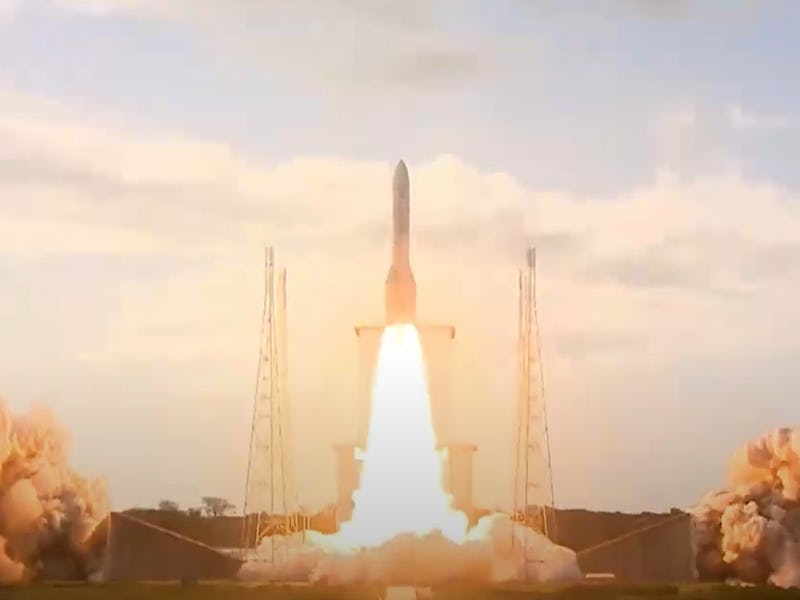Europe’s Ariane 6 Rocket Has A New Engine That Can Literally Reignite Itself In Space
Here's what the Ariane 6 rocket has to offer.

The Ariane 6 rocket promises to be Europe’s newest portal into space. On Tuesday, the rocket successfully reached orbit for the first time, taking off from Europe's Spaceport in northeastern South America. If all continues to go well on future flights, Ariane 6 will pick up after Ariane 5, the workhorse that flew for the last time in July 2023, and which delivered critical missions into space like the James Webb Space Telescope.
“Ariane 6 is Europe’s rocket for the needs of today, adaptable to our future ambitions,” Josef Aschbacher, ESA Director General, shared via ESA.
When the new rocket is fully functioning, the ESA will be able to pay a European company to launch its projects. Today, it relies on U.S.-based private space companies such as SpaceX.
Ariane 6, unlike SpaceX’s Falcon fleet, isn’t a reusable rocket. However, the newly constructed spacecraft does come with some novel technology, including a special upper stage engine, called Vinci, that will be agile and friendly to the space environment.
“With many features brand new to Ariane 6, we’ll be able to carry more and take it further, while sustainably disposing of the launcher's upper stage to prevent it becoming space debris,” officials from the operator of the Ariane 6’s inaugural flight, the European Space Agency (ESA), wrote on Sunday.
An illustration of the Ariane 6 lifting off from French Guiana.
The 184-foot-tall spacecraft is a collaboration between Arianespace, its main customer ESA, and the French space agency CNES, which built out the Ariane 6 launchpad at Guiana Space Centre near Kourou, French Guiana. Like Ariane 5, Ariane 6 will launch near the Equator, taking advantage of the boost from Earth’s rotation there to reach space.
Meet Vinci
The Vinci upper stage engine is the Ariane 6 feature with the most allure. For one, it can be reignited, which allows a single Ariane 6 launch to deliver multiple missions on different orbits.
“Reigniting an engine in zero gravity may not sound so difficult, but as fuels float freely inside the tanks, it is not as simple as you might think. The Auxiliary Propulsion Unit (APU) helps here, providing a small but steady amount of thrust to cause fuel in the Vinci tanks to settle ensuring it can fire again,” ESA officials added.
A final command tells Vinci to passivate, or remove energy, so that it can reenter the atmosphere and burn up with the least chance of an explosion. According to ESA, this reduces the chances that Vinci pieces will linger around as space debris.
With Ariane 6, the ESA can now envision missions both within Earth orbit and beyond to destinations like the Moon.